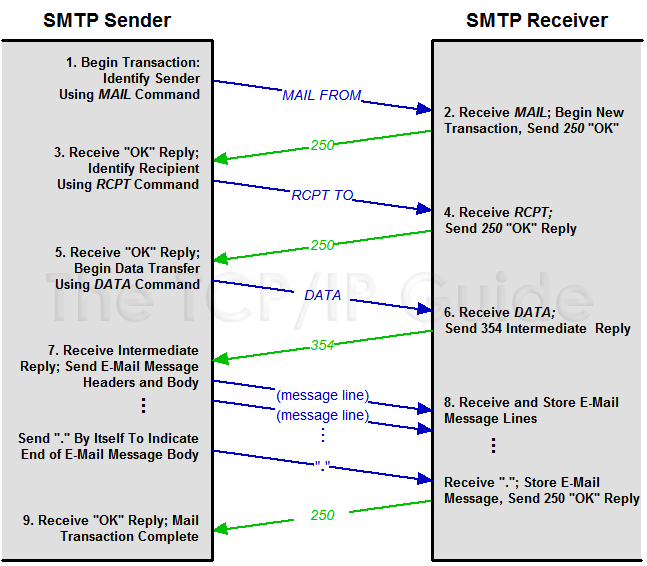 |
|
Please Whitelist This Site?
I know everyone hates ads. But please understand that I am providing premium content for free that takes hundreds of hours of time to research and write. I don't want to go to a pay-only model like some sites, but when more and more people block ads, I end up working for free. And I have a family to support, just like you. :)
If you like The TCP/IP Guide, please consider the download version. It's priced very economically and you can read all of it in a convenient format without ads.
If you want to use this site for free, I'd be grateful if you could add the site to the whitelist for Adblock. To do so, just open the Adblock menu and select "Disable on tcpipguide.com". Or go to the Tools menu and select "Adblock Plus Preferences...". Then click "Add Filter..." at the bottom, and add this string: "@@||tcpipguide.com^$document". Then just click OK.
Thanks for your understanding!
Sincerely, Charles Kozierok
Author and Publisher, The TCP/IP Guide
|
|
|

Custom Search
|
|
SMTP Mail Transaction Process
(Page 3 of 3)
SMTP Mail Transaction Details
Let’s take a more detailed look at the SMTP mail transaction process, using as aids the process diagram in Figure 305 and the example transaction of Table 250 (which has commands highlighted in bold and replies in italics). The first two steps in the mail transaction are responsible for providing the receiving SMTP server with the envelope information just discussed. The transaction begins by the SMTP sender issuing a MAIL command. This serves to inform the receiver that a new transaction is commencing, and also to tell it the “from” information on the “envelope”. An example:
MAIL FROM:<joe@someplace.org>
|
The e-mail address of the originator is always enclosed in angle brackets (“<”and “>”). The SMTP receiver acknowledges the command with a 250 (“OK”) reply message, sometimes sending back the address as a confirmation. For example:
250 <joe@someplace.org>… Sender ok
Next, the SMTP sender uses RCPT commands to specify the intended recipients of the e-mail that is being sent. Each RCPT line can contain only one recipient, so if multiple recipients are indicated, two or more RCPT commands must be issued. Each one normally specifies an e-mail address, but if relaying is being used, the command may contain routing information as well. (As described in the SMTP communication topic, this is not as commonly done as it was in the past.) For example:
RCPT TO:<jane@somewhereelse.com>
Assuming the server accepts the e-mail, it will give a 250 “OK” reply again, such as this:
250 <jane@somewhereelse.com>… Recipient ok
The SMTP sender then issues the DATA command, which tells the SMTP receiver that the message is coming:
DATA
The SMTP receiver responds with a 354 “intermediate” reply message, such as this:
354 Enter mail, end with “.” on a line by itself
The SMTP sender then sends the e-mail message, one line at a time, with a single “.” on a line to terminate it. The server confirms the receipt of the message with another 250 “OK” reply, and the transaction is done.
MAIL FROM:<joe@someplace.org> |
|
While this indeed is quite simple, I should point out that I have only shown an e-mail from a sender to one recipient, and the case where there are no problems or complications in the transaction. Due to either command syntax or server issues, it is possible for various types of errors to occur at different stages of the process, which may result in the transaction failing. There are also security concerns that may come into play, that may lead to restrictions in what transactions a server may allow.
|
| |||||||||||||||||||
Home - Table Of Contents - Contact Us
The TCP/IP Guide (http://www.TCPIPGuide.com)
Version 3.0 - Version Date: September 20, 2005
© Copyright 2001-2005 Charles M. Kozierok. All Rights Reserved.
Not responsible for any loss resulting from the use of this site.








 Key Concept: After an SMTP session is established, e-mail messages are sent using the SMTP mail transaction process. The SMTP sender starts the transaction by identifying the sender of the e-mail, and then specifying one or more recipients. The e-mail message itself is then transmitted to the SMTP receiver. Each e-mail to be sent is a separate transaction.
Key Concept: After an SMTP session is established, e-mail messages are sent using the SMTP mail transaction process. The SMTP sender starts the transaction by identifying the sender of the e-mail, and then specifying one or more recipients. The e-mail message itself is then transmitted to the SMTP receiver. Each e-mail to be sent is a separate transaction.